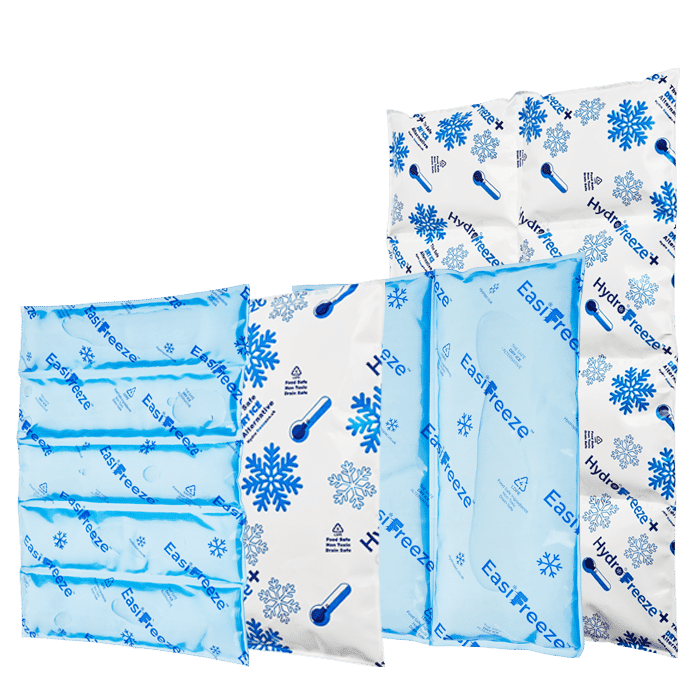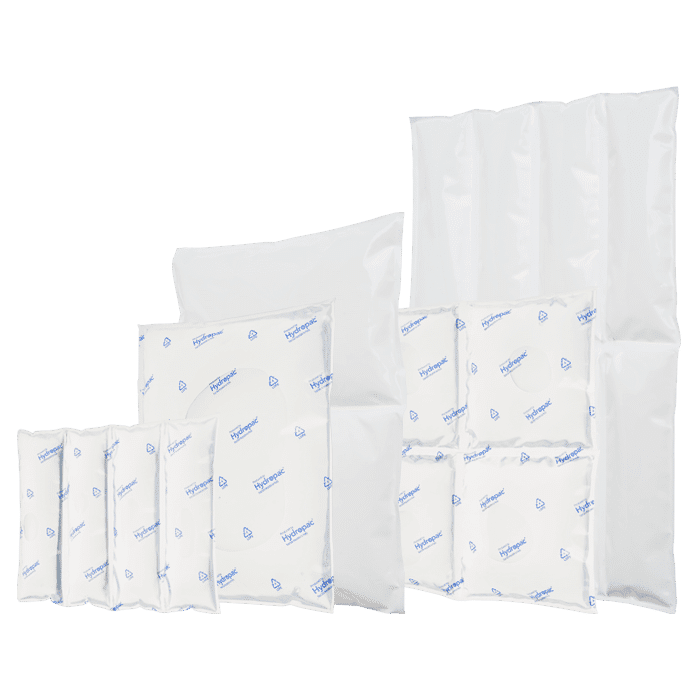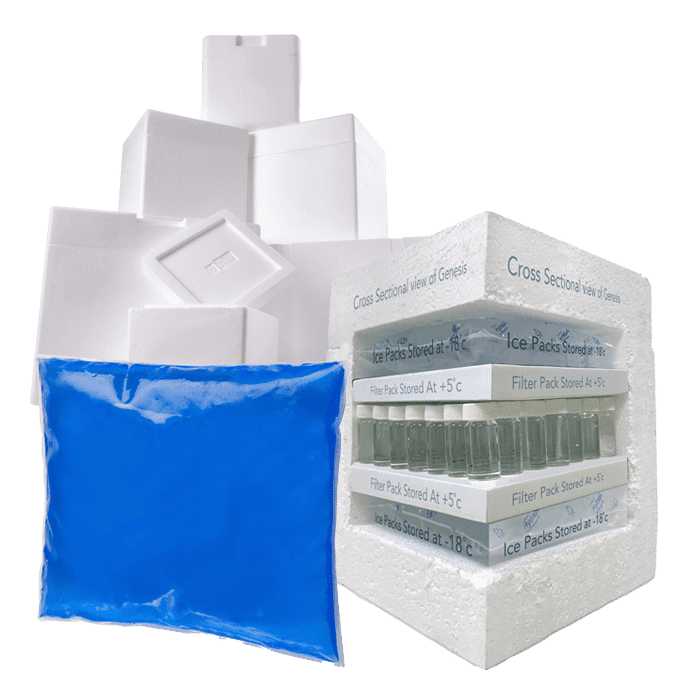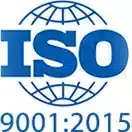Correct Vaccine Storage & Handling is Vitally Important
Over 90% of vaccines must be handled and stored correctly, at the right temperature, with no deviation from the proper cold chain at any point until they are administered to the patient. They must also not be exposed to light. This is because vaccines are fragile and must be maintained at the temperatures as recommended by the vaccine manufacturers. If these recommendations are not adhered to, potency can be affected, and the vaccine may not work or be as effective. Vaccine potency cannot be regained by then regulating the cold chain, hence why it is vitally important this is adhered to at all times. The correct cold chain temperature range depends on which type of vaccine is being stored and handled; different types need to be kept either cold or frozen.
Custom chilled solutions for you
Hydropac offers every customer a customized solution for chilled and conditioned shipping. For example, we help a customer with limited freezing capacity to deliver gel packs frozen and ready to use, and we can manufacture almost all shapes and sizes of cooling elements. As a customer, you come first: we are here to help you.
Live Virus Vaccines The majority of these will tolerate freezing temperatures, but potency can quickly be affected if they are exposed to multiple temperature profiles or exposure to heat or light. Vaccines containing Varicella Vaccines containing Varicella (a.k.a “chicken-pox”) are classed as live vaccines, but must be continuously frozen until it arrives at its final destination, at a temperature range between -50°C and -15°C This vaccine can then be kept refrigerated at a temp between 2°C to 8°C for up to 72 hours prior to reconstitution with diluent (which must be stored separately at room temperature, between 20°C to 25°C or in a separate refrigerator). Once this vaccine is reconstituted, it can be kept refrigerated (and must not be refrozen), but discarded if not used within 30 minutes.
MMR Vaccine The MMR vaccine is more versatile and can tolerate either frozen or cold storage and handling, as long as the temperature range is consistent. Inactivated Vaccines These require refrigerated storage and handling between 2°C and 8°C; the optimum average temperature these should be kept at is 5°C. Transporting Vaccines From the moment a vaccine is manufactured and complete, the manufacturer will store it at the correct temperature and conditions, in packaging designed to protect the vaccine from both adverse temperature profiles and any damage from outside forces. Once the vaccine is ready to be transported, it is vital that it is not only kept at the correct cold chain (see information above) but protected against any potential damage in transit. As such, it is important to use the correct pharmaceutical packaging to meet these requirements. As above, vaccines should be handled with extreme care at all stages of the transport and delivery process, with a constant maintained temperature profile to the set requirements until they are safely delivered. Pharma Packaging Good pharma packaging should first and foremost have thermal attributes, to protect the cold chain. It should be strong and durable, with cushioning properties to protect the vaccines inside. It should also be waterproof and leak resistant, with a good seal system that protects against tampering. For the full range of pharmaceutical packaging we can offer, please see our XXXX range. Set your requirements for temperature range and transit time to see tailored packaging that will fit your needs.
Sustainability Hydropac and CSR
Sustainability isn’t just a trend for us – it’s a promise. As we innovate, create, and lead, we keep our planet’s well-being at the forefront. With Hydropac, you’re not just preserving the quality of your cargo; you’re contributing to a healthier world.
Experience the power of sustainable temperature assurance with Hydropac – where excellence and environmental responsibility coexist for a brighter future.





